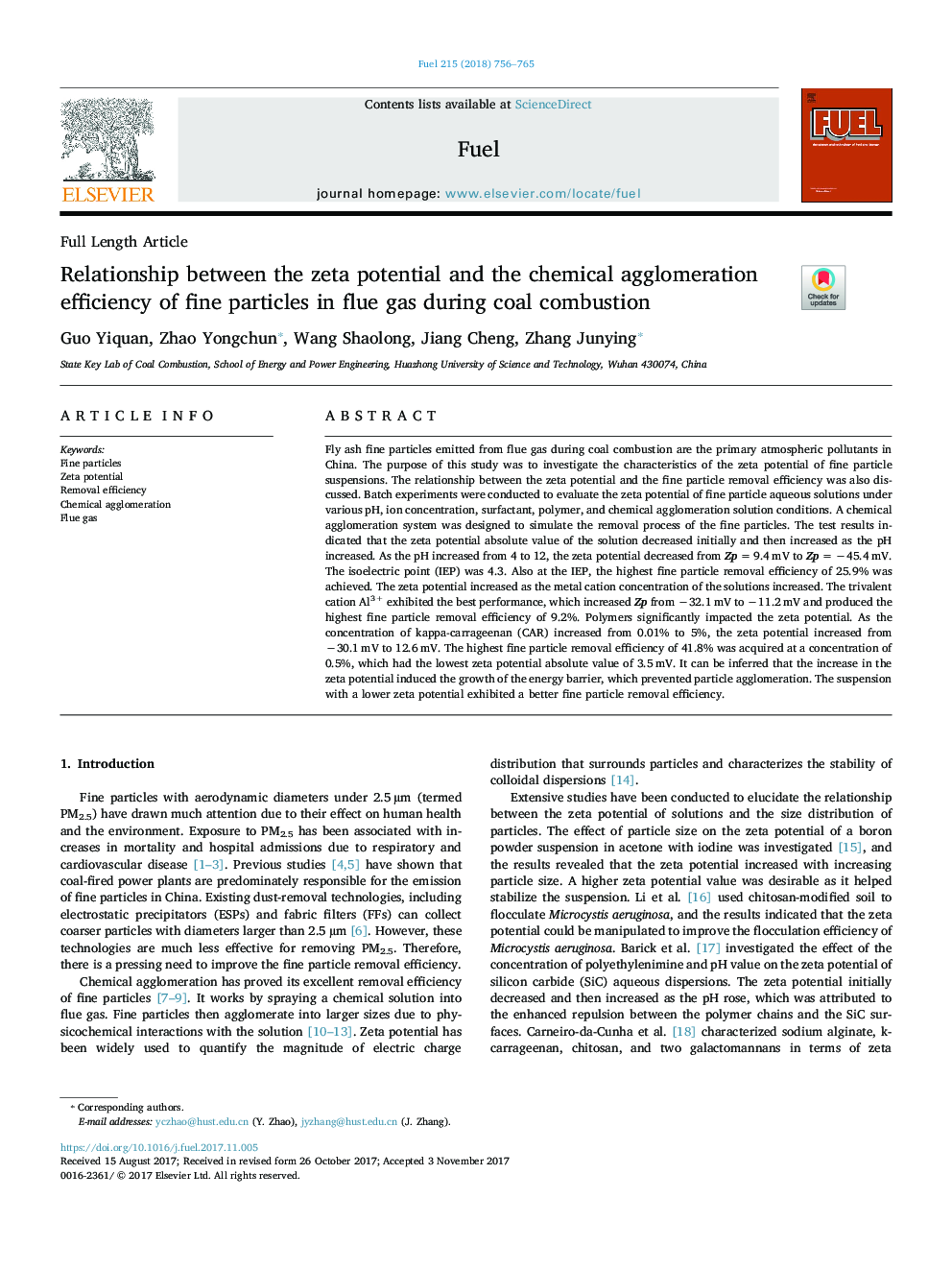| کد مقاله | کد نشریه | سال انتشار | مقاله انگلیسی | نسخه تمام متن |
|---|---|---|---|---|
| 6632495 | 1424949 | 2018 | 10 صفحه PDF | دانلود رایگان |
عنوان انگلیسی مقاله ISI
Relationship between the zeta potential and the chemical agglomeration efficiency of fine particles in flue gas during coal combustion
ترجمه فارسی عنوان
رابطه بین پتانسیل زتا و بازده شیمیایی ذرات ریز در گاز دودکش در حین احتراق زغال سنگ
دانلود مقاله + سفارش ترجمه
دانلود مقاله ISI انگلیسی
رایگان برای ایرانیان
کلمات کلیدی
ذرات ریز، پتانسیل زتا، راندمان حذف، تجمع مواد شیمیایی، گاز دودکش،
موضوعات مرتبط
مهندسی و علوم پایه
مهندسی شیمی
مهندسی شیمی (عمومی)
چکیده انگلیسی
Fly ash fine particles emitted from flue gas during coal combustion are the primary atmospheric pollutants in China. The purpose of this study was to investigate the characteristics of the zeta potential of fine particle suspensions. The relationship between the zeta potential and the fine particle removal efficiency was also discussed. Batch experiments were conducted to evaluate the zeta potential of fine particle aqueous solutions under various pH, ion concentration, surfactant, polymer, and chemical agglomeration solution conditions. A chemical agglomeration system was designed to simulate the removal process of the fine particles. The test results indicated that the zeta potential absolute value of the solution decreased initially and then increased as the pH increased. As the pH increased from 4 to 12, the zeta potential decreased from Zpâ¯=â¯9.4â¯mV to Zpâ¯=â¯â45.4â¯mV. The isoelectric point (IEP) was 4.3. Also at the IEP, the highest fine particle removal efficiency of 25.9% was achieved. The zeta potential increased as the metal cation concentration of the solutions increased. The trivalent cation Al3+ exhibited the best performance, which increased Zp from â32.1â¯mV to â11.2â¯mV and produced the highest fine particle removal efficiency of 9.2%. Polymers significantly impacted the zeta potential. As the concentration of kappa-carrageenan (CAR) increased from 0.01% to 5%, the zeta potential increased from â30.1â¯mV to 12.6â¯mV. The highest fine particle removal efficiency of 41.8% was acquired at a concentration of 0.5%, which had the lowest zeta potential absolute value of 3.5â¯mV. It can be inferred that the increase in the zeta potential induced the growth of the energy barrier, which prevented particle agglomeration. The suspension with a lower zeta potential exhibited a better fine particle removal efficiency.
ناشر
Database: Elsevier - ScienceDirect (ساینس دایرکت)
Journal: Fuel - Volume 215, 1 March 2018, Pages 756-765
Journal: Fuel - Volume 215, 1 March 2018, Pages 756-765
نویسندگان
Guo Yiquan, Zhao Yongchun, Wang Shaolong, Jiang Cheng, Zhang Junying,
